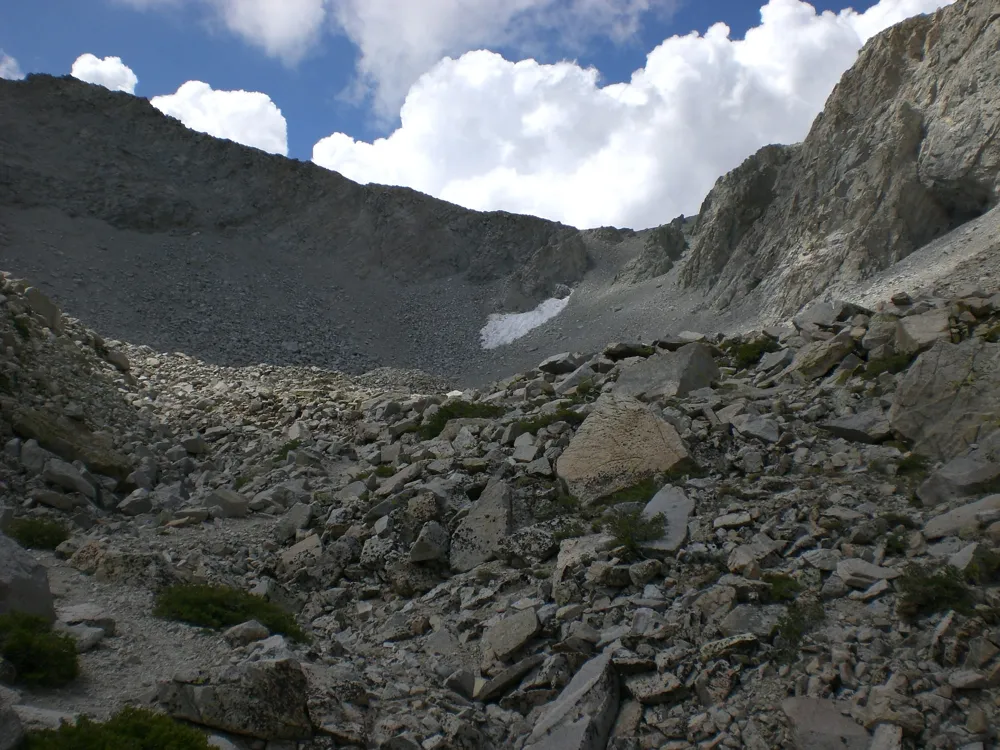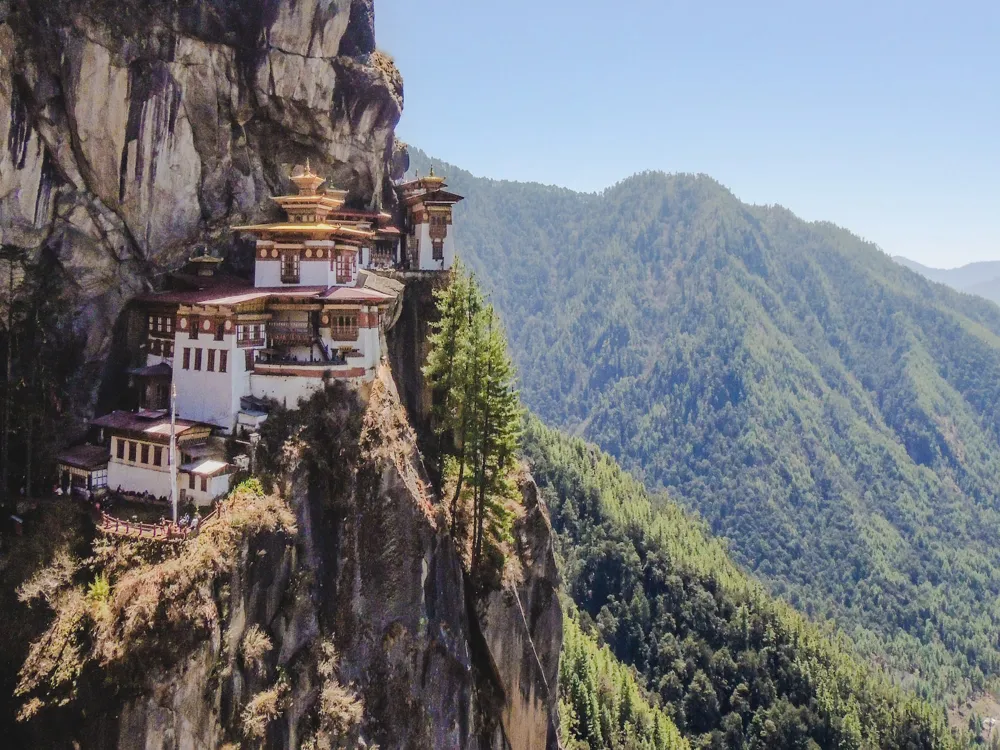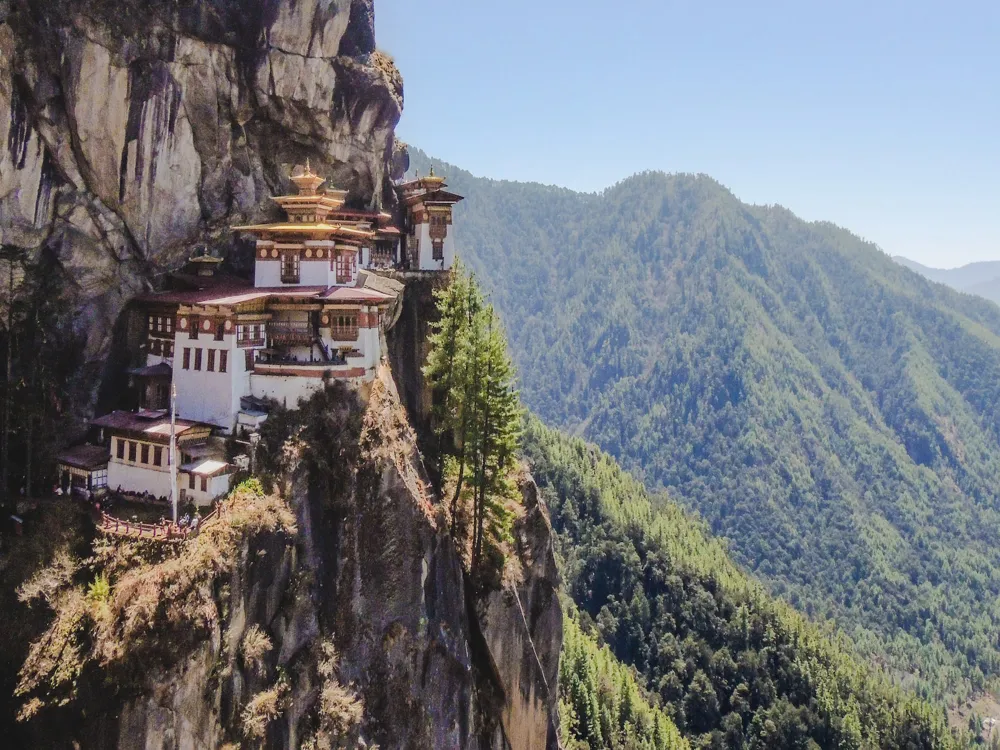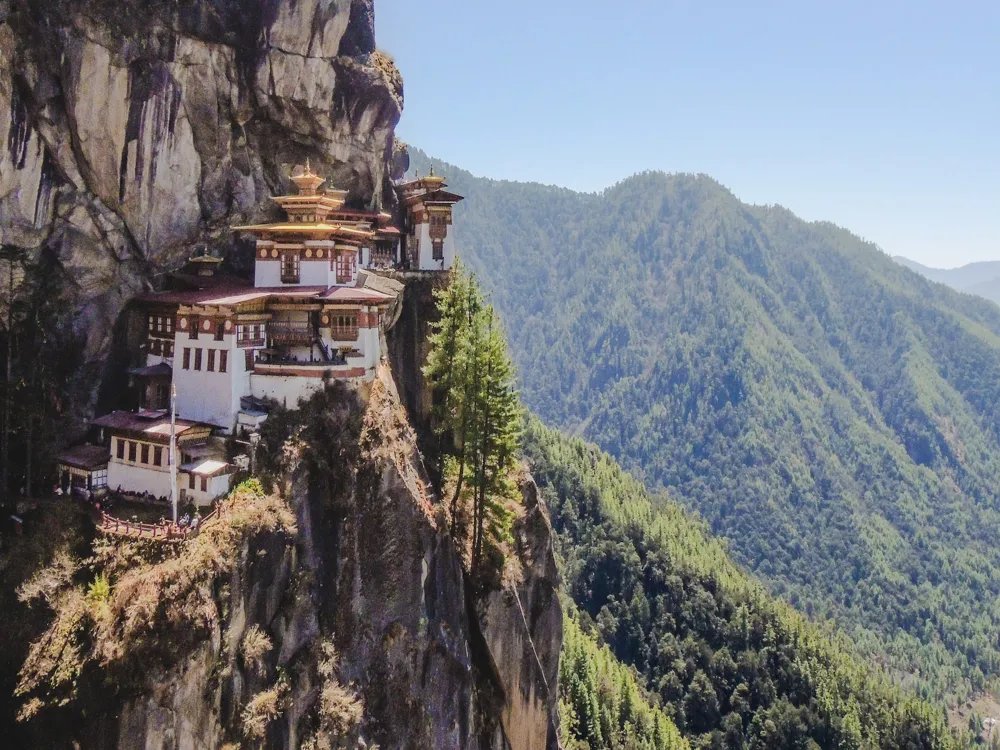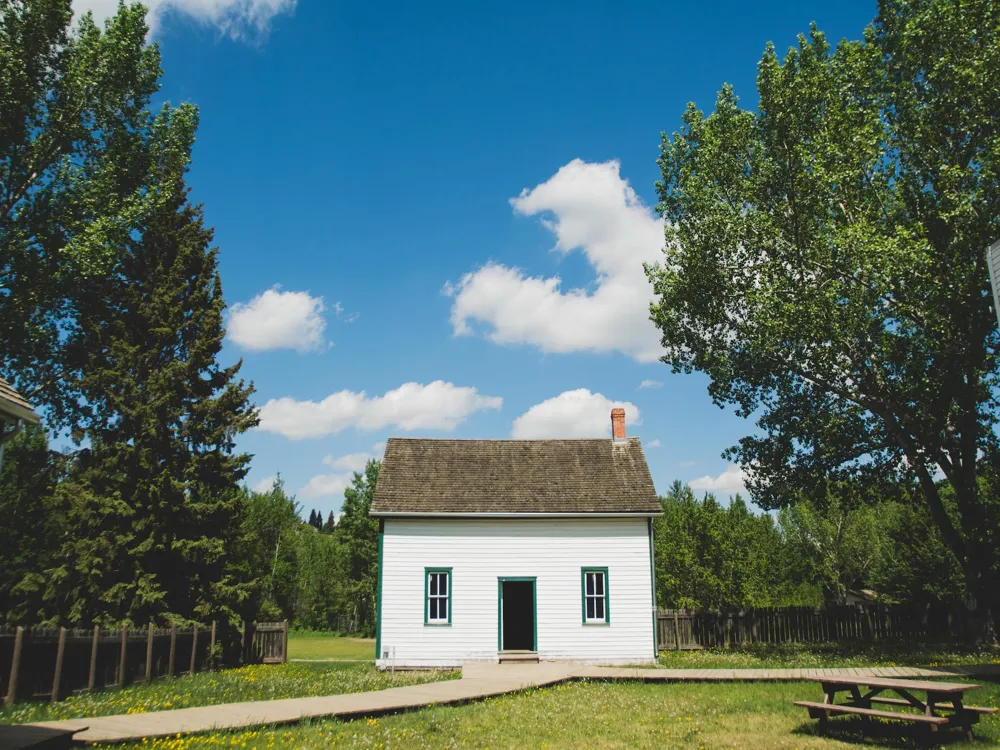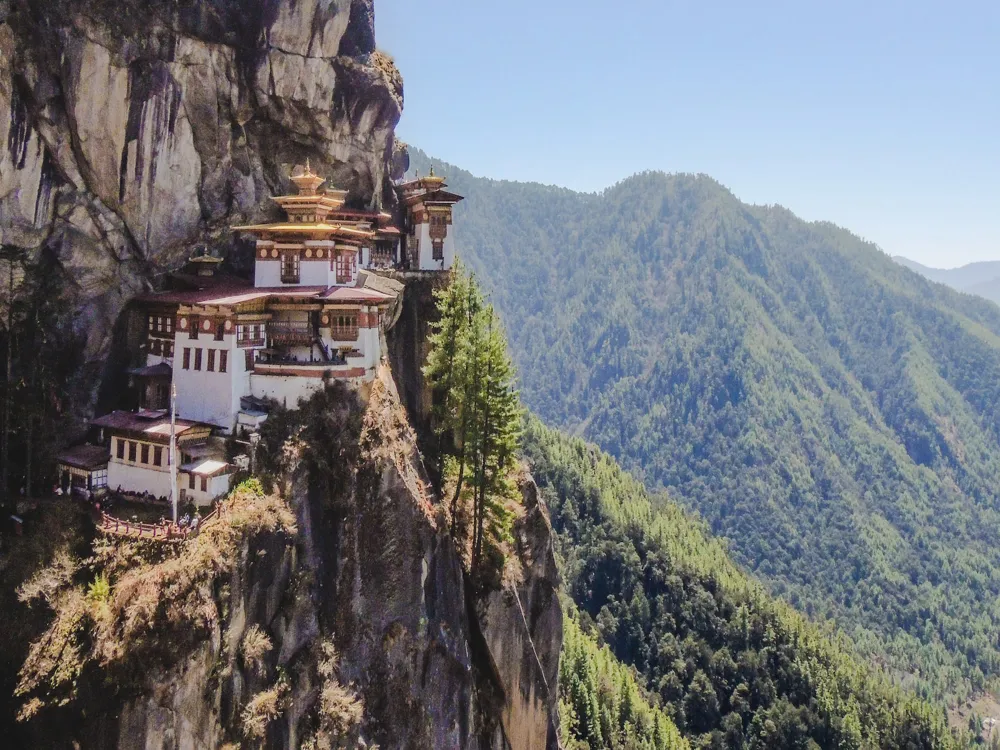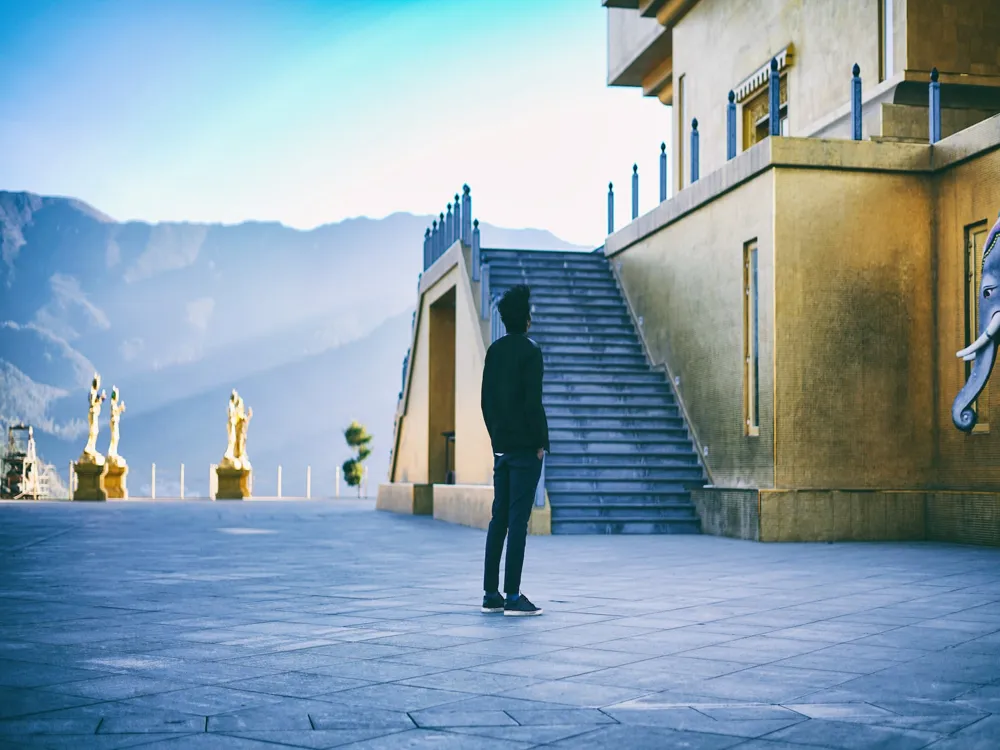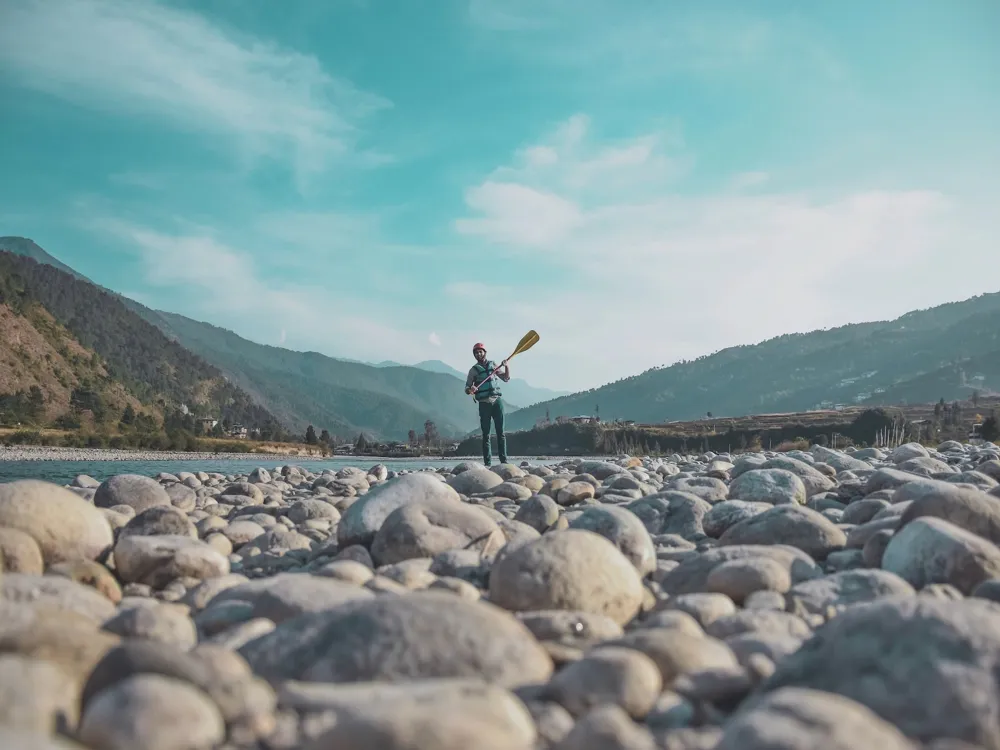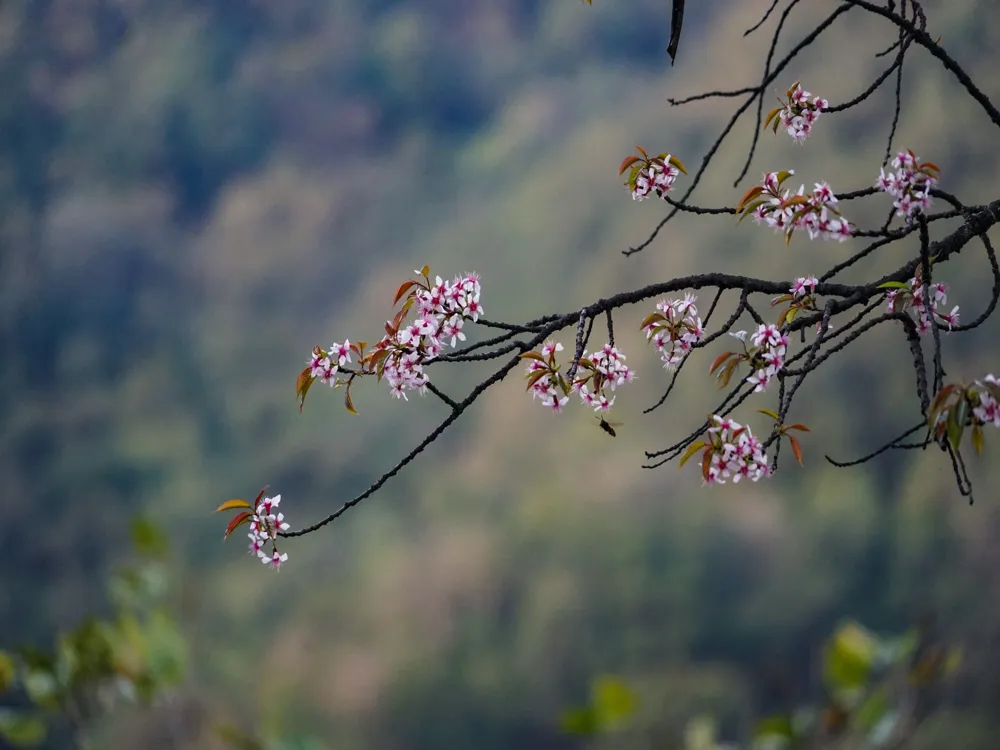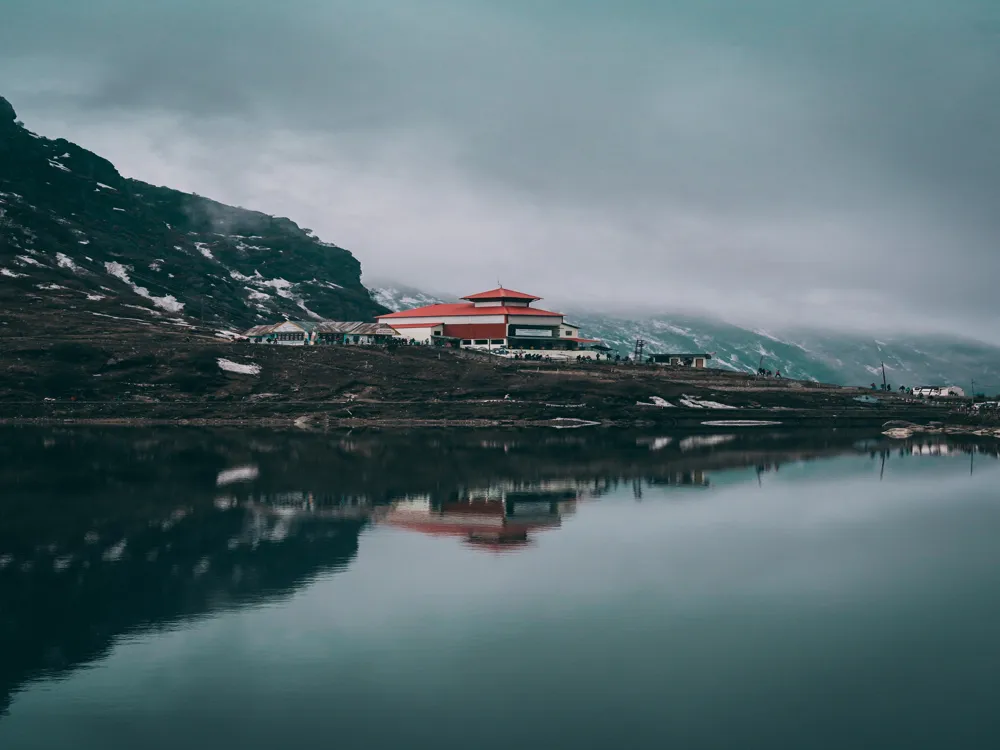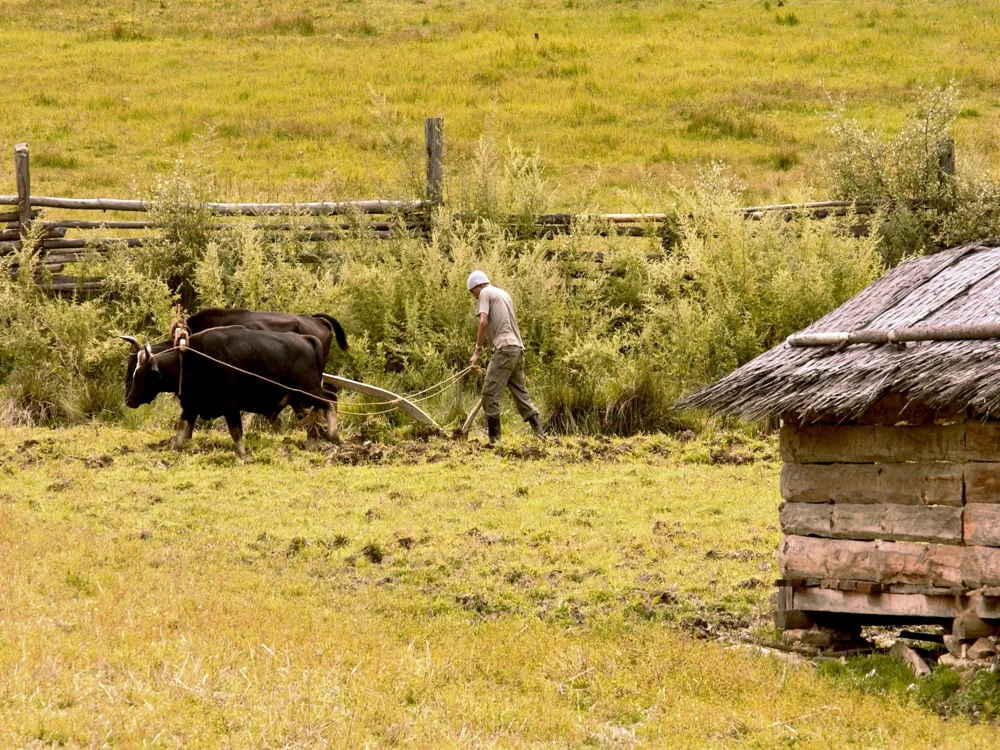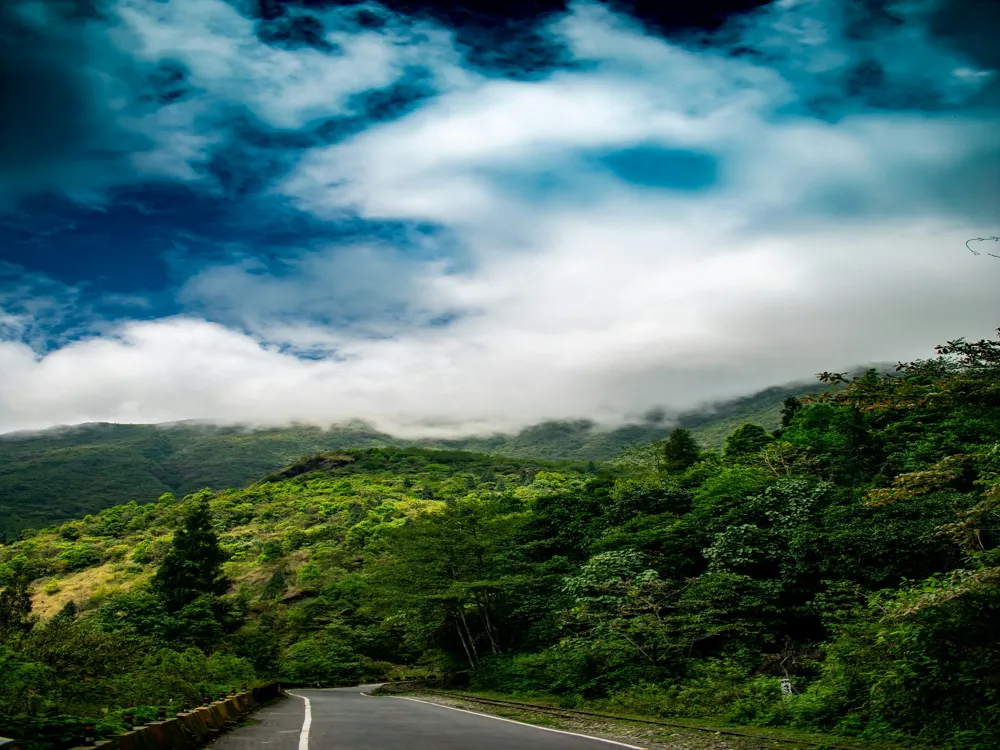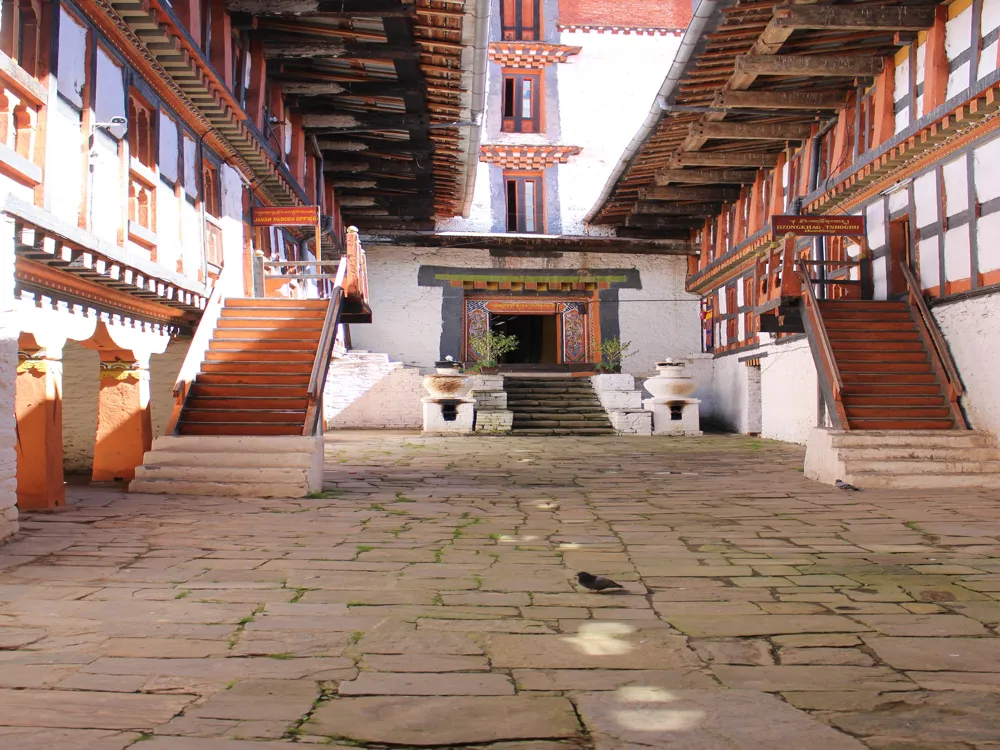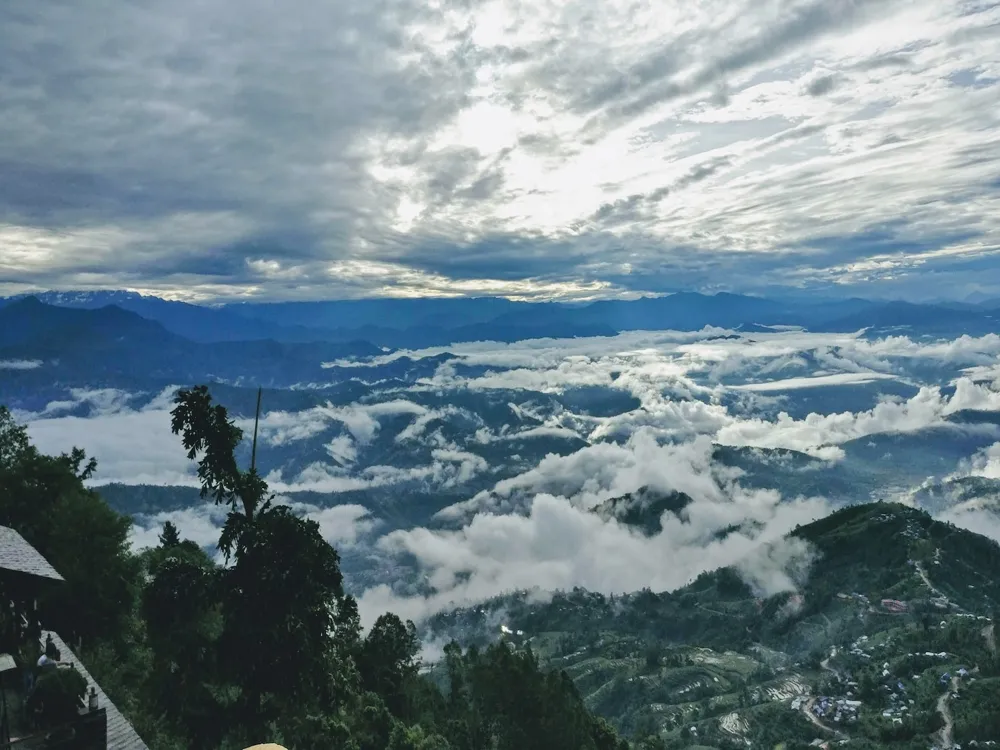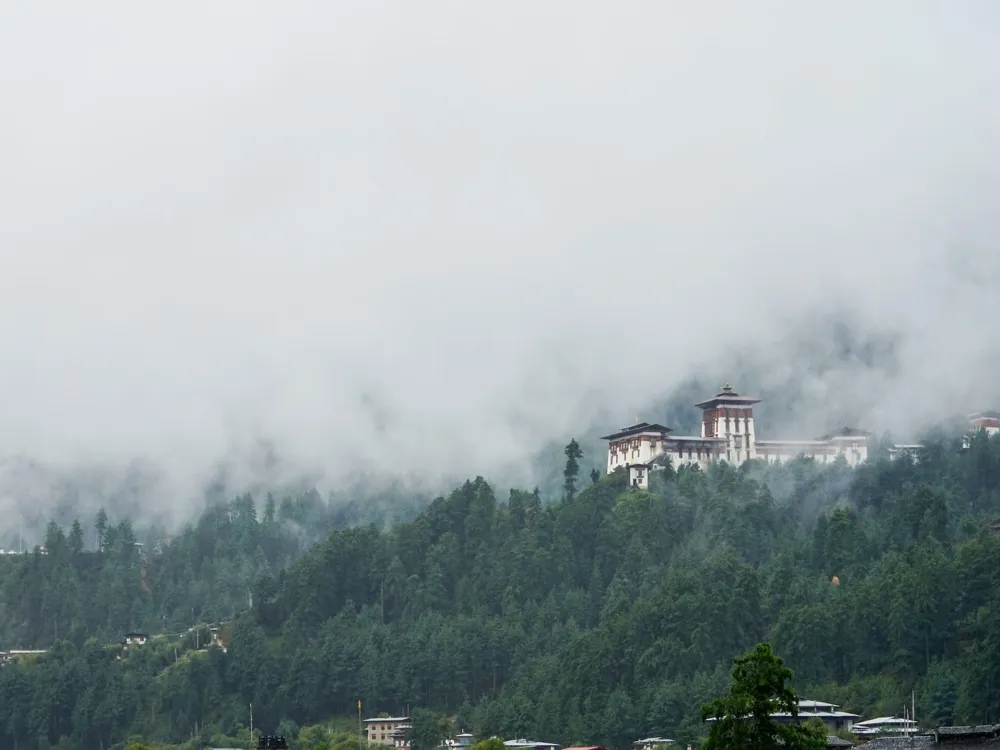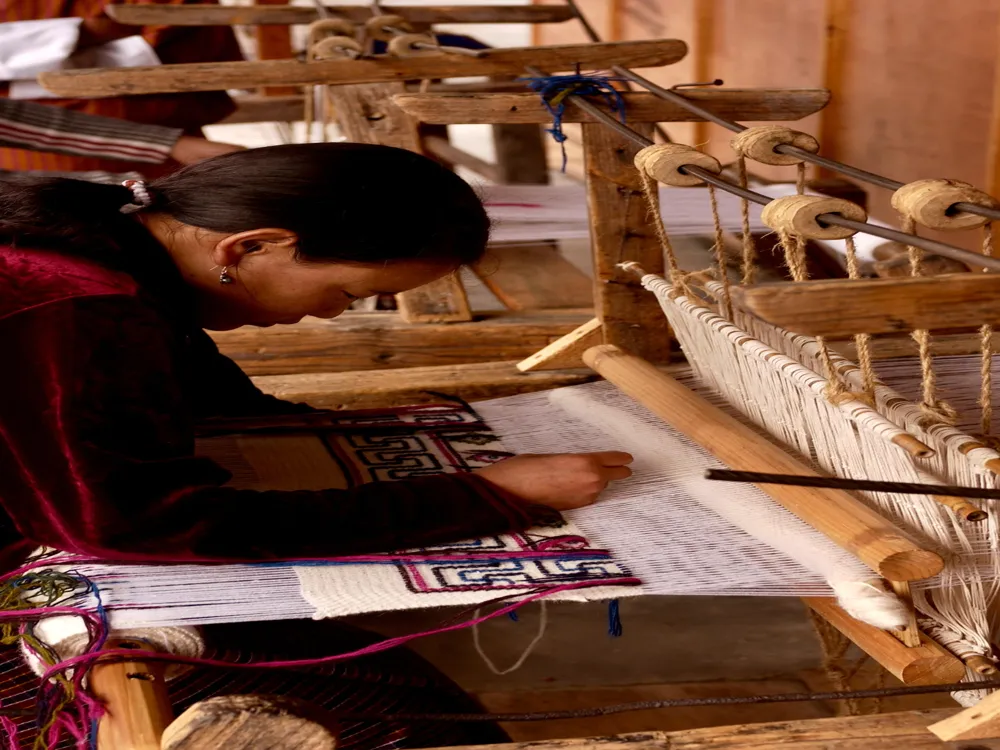Paro Chhu, a picturesque river flowing through the Paro Valley in Bhutan, is a significant natural landmark that encapsulates the essence of Bhutan's pristine environment and rich cultural heritage. Originating from the Himalayas, this river meanders through the lush landscapes of Paro, contributing significantly to the region's agriculture and natural beauty. The river's journey through the valley is marked by serene rippling waters, surrounded by dense forests and traditional Bhutanese architecture, making it a quintessential symbol of Bhutan's natural splendor. The Paro Valley, cradled by the majestic Himalayas, is known for its fertile land and vibrant biodiversity. The Paro Chhu plays a pivotal role in irrigating this fertile valley, supporting both agriculture and wildlife. As the river flows, it passes by several important cultural landmarks, including the iconic Paro Dzong and the revered Taktsang Monastery (Tiger's Nest), blending the natural and spiritual worlds in a harmonious balance. The interplay of culture and nature along the Paro Chhu is a testament to Bhutan's commitment to preserving its natural environment while nurturing its ancient traditions. Along its course, the Paro Chhu also supports a variety of recreational activities. The river's clear waters are ideal for fly fishing, while its gentle flow provides perfect conditions for kayaking and rafting. These activities offer a unique way to experience the valley's beauty, allowing visitors to immerse themselves in the tranquility and majesty of the landscape. The importance of Paro Chhu extends beyond its physical attributes. It is deeply intertwined with the local folklore and spirituality of Bhutan. The river is considered sacred, with many legends and myths associated with its origin and journey. These stories are an integral part of Bhutanese culture, often recounted by elders to younger generations, thus keeping the river's mystical significance alive in the hearts of the Bhutanese people. As one explores the Paro Chhu, it becomes evident that this river is not just a water body but a lifeline that nurtures, sustains, and inspires. Its significance in Bhutan's ecology, culture, and spirituality makes it a must-visit destination for those seeking to understand the heart and soul of Bhutan. The architecture along Paro Chhu is a splendid showcase of Bhutan's unique architectural heritage. Traditional Bhutanese architecture is renowned for its intricate designs, vibrant colors, and sustainable construction, all of which are prominently featured along the riverbanks. This architectural style is not just about aesthetics; it reflects the Bhutanese philosophy of harmony with nature and spiritual mindfulness. One of the most iconic architectural marvels near Paro Chhu is the Paro Dzong, also known as Rinpung Dzong. This fortress-like monastery stands majestically on a hill overlooking the Paro Valley, with its imposing walls and intricately carved wooden details. The dzong's architecture is a perfect blend of function and beauty, serving both as a monastic center and an administrative office. The use of natural materials like wood and stone in its construction, along with the colorful paintings and carvings, are quintessential elements of Bhutanese architecture. Another architectural gem near the Paro Chhu is the Taktsang Monastery, perched on a cliffside. Also known as Tiger's Nest, this monastery is a stunning example of human ingenuity and spiritual devotion. Its location, seemingly defying gravity, is a testament to Bhutanese architectural skills. The monastery's white walls, golden roofs, and red accents blend seamlessly with the surrounding nature, creating a picture of harmony and peace. Traditional Bhutanese houses along the Paro Chhu also reflect the architectural ethos of Bhutan. These houses are typically two or three stories high, with whitewashed walls and intricately painted woodwork. The upper floors often have extended balconies, providing a vantage point to view the beautiful landscapes. The use of locally sourced materials and the emphasis on sustainability in these constructions show the deep respect Bhutanese people have for their environment. The bridges across Paro Chhu are yet another aspect of its architectural landscape. The traditional cantilever bridges made of wood, often adorned with prayer flags, are not just functional structures but also hold cultural and spiritual significance. They symbolize the connection between the material and spiritual worlds, a recurring theme in Bhutanese culture. In summary, the architecture along Paro Chhu is a living museum of Bhutan's architectural heritage. Each structure tells a story of Bhutan's history, culture, and spirituality, making the riverbanks of Paro Chhu a canvas where the past and present coexist harmoniously. While visiting Paro Chhu, it's crucial to show respect for local customs and traditions. Dress modestly, especially when visiting religious sites, and always ask for permission before taking photographs of people or sacred places. The ideal time to visit Paro Chhu is during spring (March to May) and autumn (September to November). During these seasons, the weather is pleasant, and the natural beauty of the valley is at its peak. Participate in local activities like fly fishing, kayaking, and rafting to fully experience the beauty of Paro Chhu. Engaging in these activities offers a unique perspective of the river and its surroundings. Consider taking a guided tour for a more insightful experience. Local guides can provide in-depth knowledge about the river's history, culture, and the significance of various sites along its banks. Maintain environmental awareness and practice sustainable tourism. Avoid littering and disturbing the natural habitat, and participate in eco-friendly activities. Paro Chhu is easily accessible from the town of Paro, one of Bhutan's major cities. Visitors can fly into Paro International Airport, the only international airport in Bhutan, which is well-connected to major cities in India, Nepal, Bangladesh, and Thailand. From the airport, Paro Chhu is just a short drive away. For those already in Bhutan, Paro Chhu can be reached by road from Thimphu, the capital city. The journey is approximately 50 kilometers and offers scenic views of the Bhutanese countryside. Public buses and taxis are available for this route, providing convenient and comfortable transportation options for visitors. It's important to note that all tourists (except for citizens of India, Bangladesh, and the Maldives) must obtain a visa and book their trip through a licensed Bhutanese tour operator. This ensures a well-organized and hassle-free visit to Paro Chhu and other attractions in Bhutan. Read More:Overview of Paro Chhu in Paro
Architecture of Paro Chhu
Tips When Visiting Paro Chhu
Respect Local Culture and Traditions
Best Time to Visit
Engage in Local Activities
Guided Tours
Environmental Awareness
How To Reach Paro Chhu
Paro Chhu
Paro
₹ 19,500 onwards
View paro Packages
Weather :
Tags : River
Timings : Anytime
Entry Fee : No Entry Fee
Planning a Trip? Ask Your Question
Also Refered As:
Paro River
Paro Travel Packages
View All Packages For Paro
Top Hotel Collections for Paro

Private Pool

Luxury Hotels

5-Star Hotels

Pet Friendly
Top Hotels Near Paro
Other Top Ranking Places In Paro
View All Places To Visit In paro
View paro Packages
Weather :
Tags : River
Timings : Anytime
Entry Fee : No Entry Fee
Planning a Trip? Ask Your Question
Also Refered As:
Paro River
Paro Travel Packages
View All Packages For Paro
Top Hotel Collections for Paro

Private Pool

Luxury Hotels

5-Star Hotels

Pet Friendly







